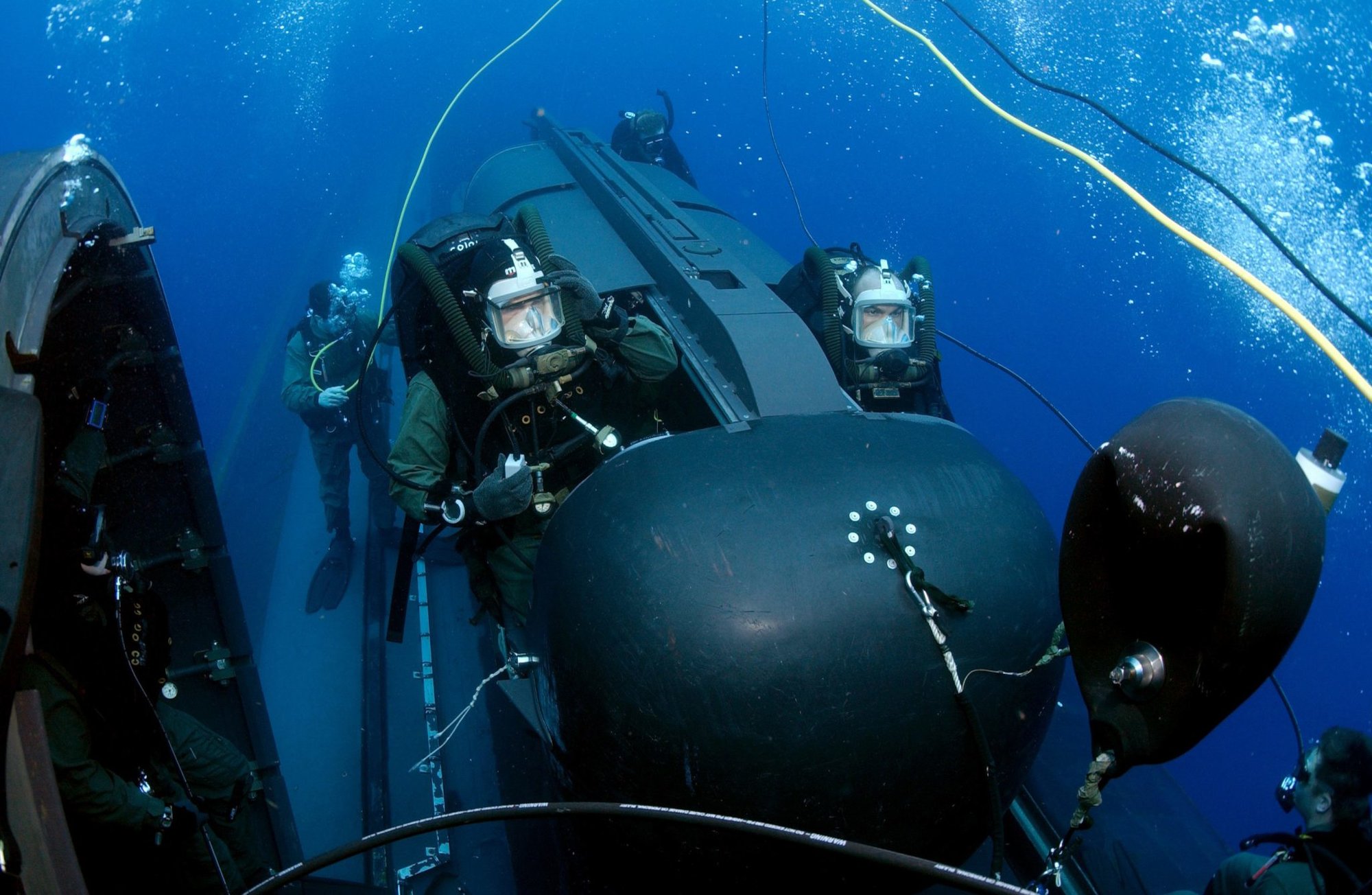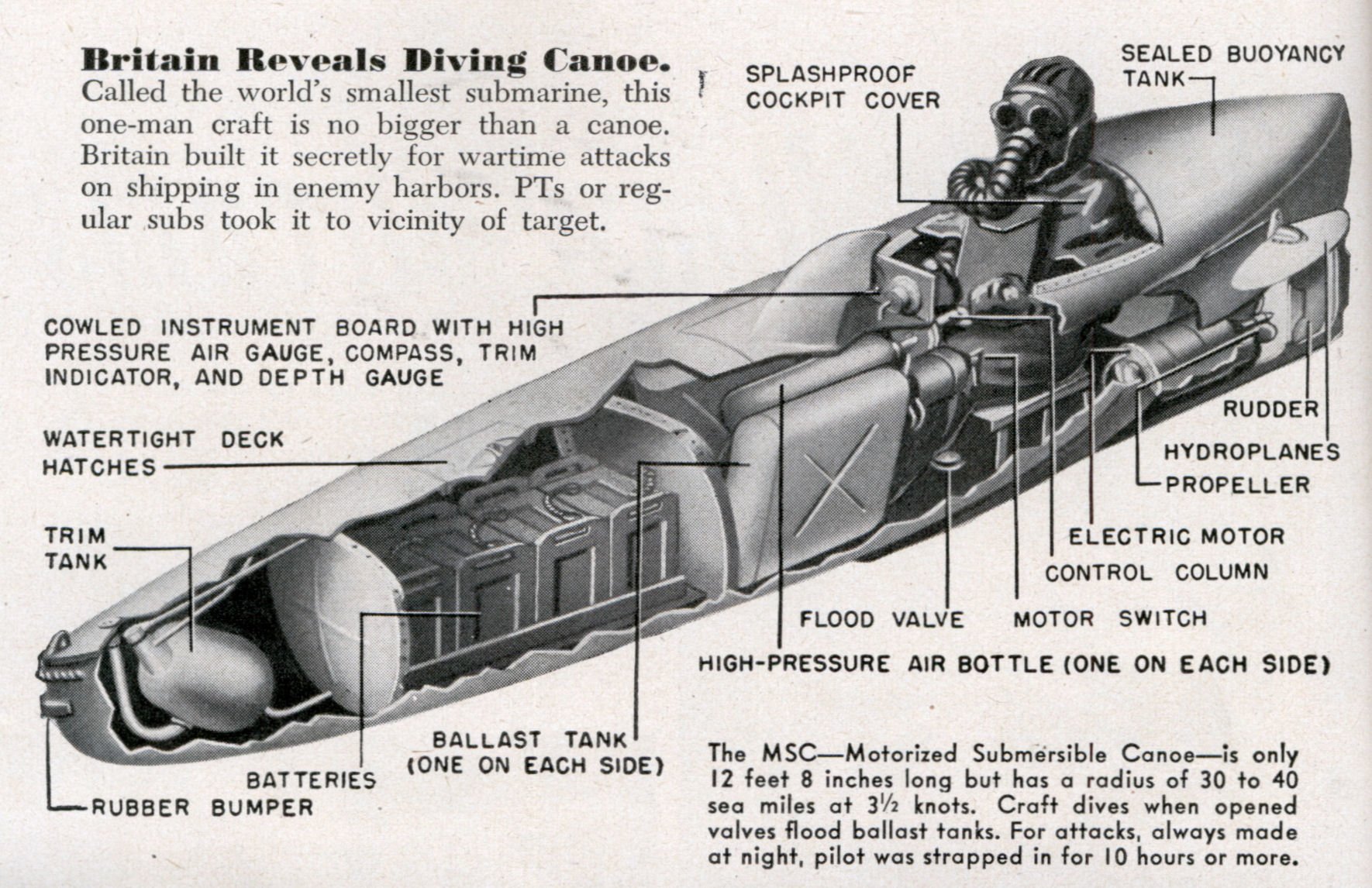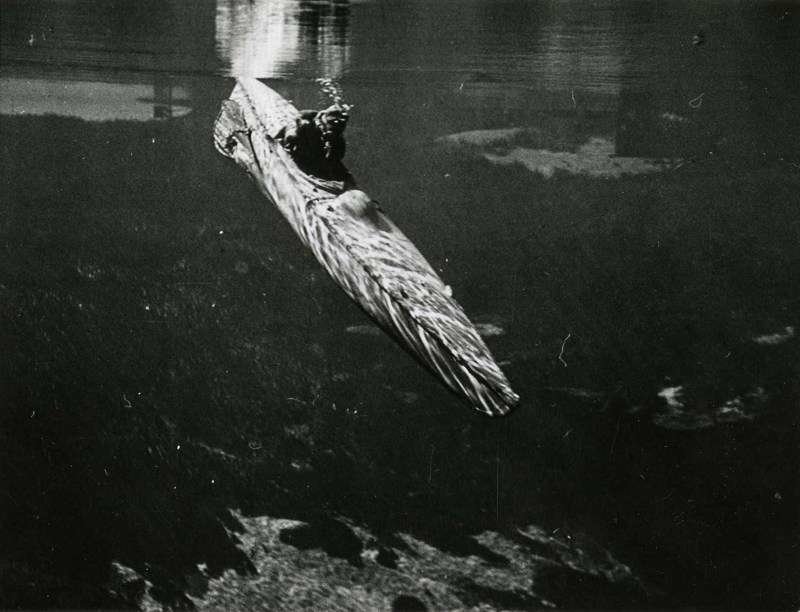‘Sleeping Beauty’ — The Mini Frogman Sub That Preceded SEAL Delivery Vehicles

Members of SEAL Delivery Vehicle Team Two (SDVT-2) prepare to launch one of the team’s SEAL Delivery Vehicles (SDV) from the back of the Los Angeles-class attack submarine USS Philadelphia (SSN 690) on a training exercise. The SDVs are used to carry Navy SEALs from a submerged submarine to enemy targets while staying underwater and undetected. SDVT-2 is stationed at Naval Amphibious Base Little Creek, Va., and conducts operations throughout the Atlantic, Southern, and European command areas of responsibility. Photo courtesy of Wikimedia Commons.
The US Navy officially formed the Naval Special Warfare SEAL Delivery Vehicle (SDV) Teams in 1983. Up to six Navy SEALs could launch from a submarine to conduct clandestine operations off the coasts of terrorist-ridden hotspots around the world. Before Navy SEALs were advancing the US military’s underwater and reconnaissance capabilities, frogmen some 40 years prior were at the forefront of naval innovation, completing highly classified missions.
Maj. Hugh Quentin Reeves, one of the many inventors compared to Q, the gadget genius from James Bond, gained infamy for his wartime creations. His Welrod bolt-action assassin’s pistol was still being used by British commandos during the Falklands conflict in 1982. The British Special Operations Executive and Special Operations Australia already had collapsible canoes in their arsenal. These were used primarily by two operators with paddles to conduct surveillance, reconnaissance, and infiltration missions. But they lacked an undetectable and submersible stealth transportation vehicle.

The Royal Italian Navy had developed the Siluro San Bartolomeo human torpedo for Italian frogmen, who carried out successful attacks against the battleships Queen Elizabeth and Valiant early on in the war. Reeves took his own similar concept to the Allied Inter-Services Research Bureau in 1942. First called the Underwater Glider, then affectionately “Sleeping Beauty” after Reeves was caught asleep inside one at the Staines reservoir proving ground, it ultimately was named the Motorised Submersible Canoe, or MSC.
The MSC was designed to penetrate enemy-held harbors undetected to emplace magnetic limpet mines or explosives on a ship’s hull and extract before anyone was alerted. The submersible steel and aluminum craft was only 12 feet 8 inches in length and could fit a haul of nine limpet mines as well as a single operator wearing a rebreather and a rubber wetsuit. The Sleeping Beauty was advanced enough to use four 6-volt batteries to power an electric motor either on the surface or submerged, but basic enough for its operator to fall back on paddles if the engine were to fail.

After the highly successful Operation Jaywick, where six frogmen from Australia’s Z Special Unit took three Folboat canoes to target seven Japanese ships in the Singapore Harbor in 1943, the top-secret Sleeping Beauty was tasked for a following mission dubbed Operation Rimau. The results were catastrophic. The operation was compromised upon approach into Singapore Harbor, and the submersibles were sunk to prevent them from falling into the enemy’s hands. All operators were killed or captured by the Japanese.
The Sleeping Beauty didn’t have the operational success that was envisioned for it, but the concept set a foundation for submersible craft and naval commandos moving forward. Christian Lambertsen, often called the “Father of American SCUBA,” trained Office of Strategic Services swimmers in 1944 to anchor a Sleeping Beauty a few hundred yards from a target. The frogmen would dismount with their explosives in tow, swim to the target and place the demolition charge, and swim back to the Sleeping Beauty to extract. Lambertsen’s foresight as a World War II-era frogman paved the way for the modern warfighter in the 21st century.

Matt Fratus is a history staff writer for Coffee or Die. He prides himself on uncovering the most fascinating tales of history by sharing them through any means of engaging storytelling. He writes for his micro-blog @LateNightHistory on Instagram, where he shares the story behind the image. He is also the host of the Late Night History podcast. When not writing about history, Matt enjoys volunteering for One More Wave and rooting for Boston sports teams.
BRCC and Bad Moon Print Press team up for an exclusive, limited-edition T-shirt design!
BRCC partners with Team Room Design for an exclusive T-shirt release!
Thirty Seconds Out has partnered with BRCC for an exclusive shirt design invoking the God of Winter.
Lucas O'Hara of Grizzly Forge has teamed up with BRCC for a badass, exclusive Shirt Club T-shirt design featuring his most popular knife and tiomahawk.
Coffee or Die sits down with one of the graphic designers behind Black Rifle Coffee's signature look and vibe.
Biden will award the Medal of Honor to a Vietnam War Army helicopter pilot who risked his life to save a reconnaissance team from almost certain death.
Ever wonder how much Jack Mandaville would f*ck sh*t up if he went back in time? The American Revolution didn't even see him coming.
A nearly 200-year-old West Point time capsule that at first appeared to yield little more than dust contains hidden treasure, the US Military Academy said.












